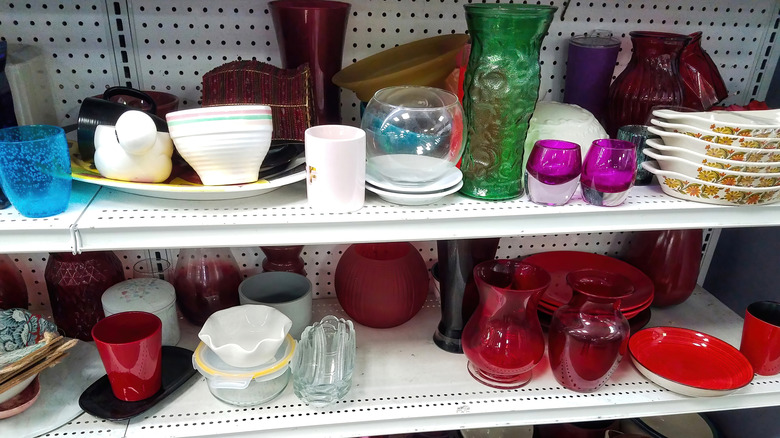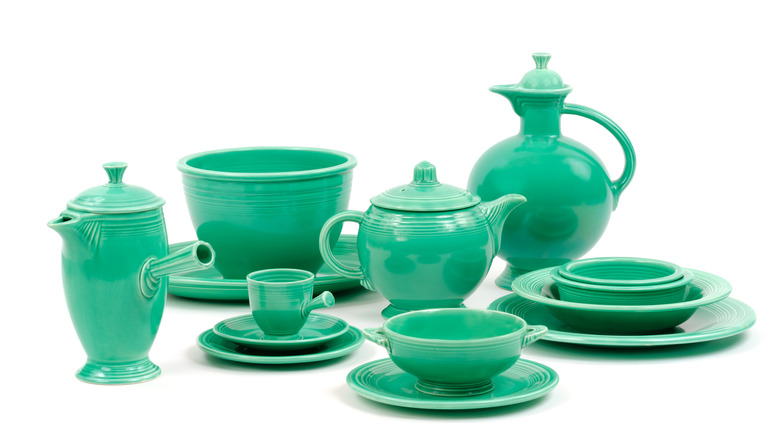The Vintage Dishware That Could Be Worth Big Bucks
Collecting has always been a popular pastime with endless possibilities and one very prominent downside. The more people who collect a particular item, the higher the cost usually goes, and before you know it, there's a $1,000 Trader Joe's Mini Tote for sale on the internet. Many collectors are on the hunt for vintage items like the captivatingly vibrant Fiesta dinnerware sets. Those looking to start or complete a Fiesta set should expect to pay a high dollar amount for each piece, given that it's in good condition. A Covered Onion Soup bowl in excellent condition may cost anywhere from $1,500 to $9,000, depending on color. Add an additional 20% price if this item is an early, marked, flat-bottom piece.
While there are plenty of less expensive pieces available online as well, it all depends on what you're collecting. Reddit users have reported purchasing rather large multi-color sets of Fiestaware for $1,000, which is a far cry from a $9,000 soup dish. Some just adore the style and durability of Fiestaware, while others want a piece of history. The line was introduced by the Homer Laughlin China Company and designed by Frederick Hurten Rhead in 1936. The new dinnerware was so successful that by year two of production, the number of pieces made had already exceeded one million. Fiesta is still going strong and creating new pieces today, but if vintage is what you're after, there are a few things to keep in mind while you're on the hunt.
Indicators of vintage Fiesta pieces
Vintage enthusiasts may find themselves in a variety of estate sales, antique stores, or Facebook Marketplace meetups just to secure the ownership of some Fiesta pieces. This means knowing what to look for is key. First, unless your intention is to use these dishes for display only, check for any cracks. Cracked dishes shouldn't be holding anyone's food due to harboring gross bacteria. Second, what color is the dish? Nowadays, there are many, many colored options, but originally, in 1936, the five color lineup was Red, Cobalt Blue, Yellow, Ivory, and Green, with Turquoise joining the party in 1937. The original colors, particularly the red, used uranium dye. However, these radioactive Fiestaware dishes are still safe to eat from (so long as they aren't cracked), and the use of uranium dye has long since ended for the company.
Third, the Art Deco style that makes these pieces so appealing is prominent in early dishes. The concentric circles that widen as they extend toward the outer part of the dish are an easy way to spot an early Fiesta. Mixing bowls with lids are another sign of early production — though finding both pieces together may be a challenge. The beauty of vintage is that it keeps the past alive and well while allowing communities of collectors to come together over a shared love of — in this case — Fiesta dinnerware.

